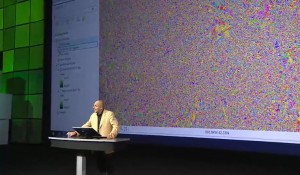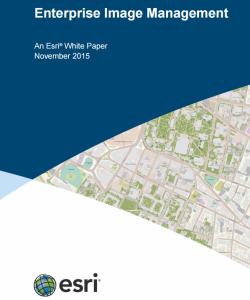When people think about managing data, I can’t imagine anything as intimidating to an IT person as imagery data. Why you may ask? Because the file size is large, very large, the formats can be unfamiliar, and after you’ve acquired it, people want access to it immediately. Imagery data can be so large in fact, that the first time I heard people regularly using the word ‘Terabyte’ was in conjunction with imagery data, and quickly it moved to ‘Petabytes’. Remotely sensed data originates from many different types of sensors…multiple countries have their own satellites, aircraft equipped with cameras, drones, weather balloons, go pros…the list goes on and on. In addition, you have all the different types of data i.e. Optical, Multispectral, Radar, Lidar. And to add to that, you end up with all the different formats from geoTIF, NITF, JP2, JPEG, MrSID… The possibilities are endless for the volume, variety and velocity of data that could be coming into a system.
For an IT person, figuring out the best method to store the data is only the first part of the problem, because as soon as you have it, people want it. And they want more than one type of data, they want multiple pieces of imagery data from different formats captured with different sensors taken at different times. There are many challenges. Efficiently managing, processing and providing suitable access to the data is what the industry affectionately refers to as a ‘big data’ challenge.
Being able to solve that challenge however, can produce amazing results and understanding. Check out this cool video from our 2015 Esri User Conference in which one of our Big Data specialists, Mansour Raad, discusses a problem best solved using imagery and our new Big Data analysis technology (due to be released in 2016) to perform over 300 billion spatial and temporal calculations.
But in order to take advantage of new advances in technology to analyze, visualize and understand big data sets, like imagery and remotely sensed data, you first need to effectively manage your data.
Many times we get asked by customers as to the best way to get started, and there are several answers, depending upon the time, people and money resources your organization wants to invest. You can manage everything yourself, on-premise, or break it up, and manage the transactional data on-premise and the static, less changing data in the cloud. You can hire a professional services company, like Esri’s rent-a-tech, who can provide a jump start package which does the dirty work of getting the foundation and structure started, and also on-site training for your people. Or you can offload all of the effort to someone who can manage your imagery in the cloud, similar to our managed services offerings. The choices are not cut and dried, and you can mix and match depending upon your needs and company requirements. To help you get started on this journey, we’ve put together an Enterprise Image Management white paper, which covers a lot of the topics you need to think about in detail, and explains thoroughly how ArcGIS technology can simplify managing imagery.


Article Discussion: